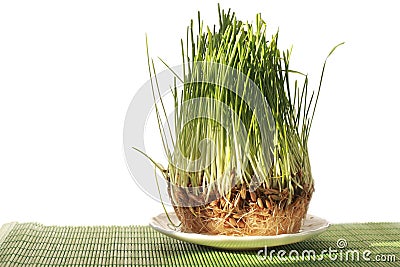

Here are some examples of seeds that need darkness to germinate. Note that, even if darkness is necessary for the germination of these light-intolerant seeds, as soon as they have germinated, that is to say as soon as you see small pale sprouts appear, you do have to immediately move them to a well-lit location. Photo: For seeds that are surface-sown or where the recommendation is to “barely cover the seeds with soil,” like the tiny seeds of delphiniums and coriandre, you really will have to place the seed tray in the dark, perhaps in a closet or inside a black trash bag or cover it with a wooden board or a sheet of something opaque to cut off any light. You can insert trays of seeds needing darkness into a black trash bag until germination. You can therefore immediately place a pot of nasturtium seeds in a lighted spot with all your other seedlings. Nasturtium seeds, for example, are huge (for seeds, that is!), nearly the size of beans, and their recommended planting depth is ¾ inches (2 cm), certainly deep enough that no light will reach them. Nasturtium seeds require deep sowing, putting them out of reach of sunlight. Just sow them at the recommended depth, usually 3 times the height of the seed, and no light will reach them. For medium and large seeds, therefore, you don’t have to do anything special. That will keep the light off even when the seed tray is exposed to light. The first is the most obvious: simply make sure that you cover these seeds with soil at sowing time. So, how should you handle these eccentrics? There are essentially two possibilities. Most are forest species, not often grown in home gardens. I mean, it just doesn’t seem logical that a seed would need darkness to germinate, does it, not when all green plants need light to grow? And there aren’t many of them, but they do exist. These are the oddballs of the seed-sowing world. Plus, this way, there is no problem if you have to be away for a few days and are not present to move the trays after germination (you shouldn’t leave sprouted seedlings in the dark more than a day) … or if you’re the forgetful type and don’t check your seeds daily. And also, it allows me to have all my seedlings in one place rather than having two locations. This is partly pure laziness: it’s just one step less to think about. Personally, I expose light-indifferent seeds to light as soon as I sow them. But they’ll germinate just as well if exposed to light. So, logically, you could place them in a place with little or no light at first, then expose them to light only when they germinate. These seeds will germinate with or without exposure to light. Herbs and annuals, though, are more of a mixed bag. (Hint: they’re usually seeds of medium to large size.) Almost all vegetables, except lettuce, fall into this category. There is no need to list these, as they make up the majority of seeds. Light-Indifferent Seeds Probably two-thirds of the seeds you buy are of varieties that are light indifferent. Now you know why! It’s because all but a very thin covering of soil would place them in the dark!

On the back of the seed pack, it often recommends not covering them with soil, but simply pressing them into moist soil when you sow them. Note that most seeds that need light to germinate are very small, sometimes almost dustlike. In general, seeds that need light to germinate, like these nicotiana seeds, are the very smallest ones. This includes maybe a third of the plants we commonly grow from seed.Īmong the well-known plants whose seeds need light to germinate or, at least, for which exposure to light stimulates better germination, are the following: But there is a significant proportion of seeds that will not germinate if they aren’t exposed to light. Here’s why.įirst, true enough, light isn’t necessary to germinate most seeds: the majority are perfectly capable of germinating in complete darkness. Did I understand that right?Īnswer: You pretty much have it, but… I still recommend exposing the seeds to light as soon as you sow them. Is light absolutely necessary or will heat and humidity be enough to get seeds to germinate? Then, when the stems begin to emerge from the soil, I assume it is time to supply light until I can acclimatize the young plants and transplant them into the garden. Photo: Question: I have a question regarding the germination phase of sowing seeds.


 0 kommentar(er)
0 kommentar(er)
